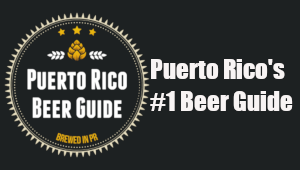 San Cristobal Fort is the largest Spanish fortification in the New World and along with El Morro Fort it forms the center pieces to the extensive fortifications that have protected Old San Juan for hundreds of years.
San Cristobal Fort is the largest Spanish fortification in the New World and along with El Morro Fort it forms the center pieces to the extensive fortifications that have protected Old San Juan for hundreds of years.
Built in 1664, San Cristobal Fort covers some 27 acres of land and was constructed to protect San Juan from land attack and it is the first fort that you will see when driving into Old San Juan.
Initial construction began in 1634 in response to the 1625 Dutch attack on San Juan and between 1765 to 1783 further construction was carried out to increase the size of the fort resulting in the construction that you see today.
During World War II, the US Army used San Cristobal as a military base and constructed concrete pillboxes and an underground bunker control center. The US armed forces left the fort in 1961. Today San Cristobal is a declared World Heritage Site by the United Nations
Touring San Cristobal Fort
 There are 2 entrances to the fort; the main entrance on Munoz Rivera Avenue and a second entrance on Norzagaray Street. At both entrances you will receive a pamphlet that includes a map of the fort and information on various points of interest.
There are 2 entrances to the fort; the main entrance on Munoz Rivera Avenue and a second entrance on Norzagaray Street. At both entrances you will receive a pamphlet that includes a map of the fort and information on various points of interest.
At the Munoz Rivera Avenue entrance you have the option to watch a short film that covers the construction and history of the fort. The film runs continuously during the day and is shown in English on the hour and half hour and Spanish on the quarter and three quarters past the hour.
A good introduction to the fort is given by the Park Rangers during their Orientation Talks. These talks are given in English on the hour and in Spanish on the half hour. If you prefer, just head into the fort and use the map to find your way around.

Highlights include:
Main Plaza – at the center of San Cristobal, the plaza was used for troop formations and drill practice. The vaulted rooms (casemates) that overlook the ocean would have also included a canon during battle times.
Santa Barbara Chapel – located in the main plaza of San Cristobal and added in 1860’s. Santa Barbara is the patron saint of artillerymen and the soldiers of the fort would pray to her regularly.
Troop Quarters – the four large barracks located off the main plaza were constructed in 1771 and consisted of two floors. Today one room has been fully restored so that you can see how the soldiers would have lived in the 18th century.
 Tunnels – there are several long dark tunnels (illuminated for the public) in the fort that were used to move men, supplies and cannons during battles. As you walk through the tunnels look out for soldier’s drawings on the wall. You will see grooves along the walls that would have been loaded with gun powder so that the tunnels could be destroyed to block enemy access. From the main plaza the tunnel on the left takes you to the only dungeon in the fort.
Tunnels – there are several long dark tunnels (illuminated for the public) in the fort that were used to move men, supplies and cannons during battles. As you walk through the tunnels look out for soldier’s drawings on the wall. You will see grooves along the walls that would have been loaded with gun powder so that the tunnels could be destroyed to block enemy access. From the main plaza the tunnel on the left takes you to the only dungeon in the fort.
Second Level – reached by taking the main tunnel from the main plaza, during battle soldiers would drag cannons and supplies up this tunnel. From this level canons would be placed to fire out to see as well as inland. During battle soldiers would move the canons around the second level depending on where the enemy was attacking from. On this level you will also see the World War II Artillery Observation Post that was added by the US Army. The second level will give you several great views to the east as well as San Juan Bay and Old San Juan,
 Mortar Balls – the pyramid of mortar balls on the second level were excavated from the grounds around San Cristobal. These balls would have been used in mortars rather than cannons and are hollow to allow them to be filled with explosive powder so that they would explode above the enemy.
Mortar Balls – the pyramid of mortar balls on the second level were excavated from the grounds around San Cristobal. These balls would have been used in mortars rather than cannons and are hollow to allow them to be filled with explosive powder so that they would explode above the enemy.
Garitas (Sentry Boxes) – provided lookout points for the soldiers and the one down below closest to the ocean was known as the ‘Devils Sentry Box’ and is one of the oldest sections of the fort dating back to 1634
Third Level – this is the highest part of San Cristobal and was known as the Cavalier of San Miguel. It served as an observation post as you could see in all directions. Today, you will see the three flags of the United States, Puerto Rico and the Spanish military flag known as the Cross of Burgundy. You will also find the second World War II Observation post.
 Outerworks – from the walls of San Cristobal you can see the extensive outer sections of the fort that are only available to the public during
Outerworks – from the walls of San Cristobal you can see the extensive outer sections of the fort that are only available to the public during
Special tours are available if you would like to learn more about the tunnels and the outer sections of San Cristobal.
Tunnel tour – Fridays, Sunday (English), and Tuesday (Spanish) at 10:30am with a maximum of 15 people
Outerworks tour – Saturday (English) and Friday/Sunday (Spanish) at 2:30pm also Tuesday at 5pm (English) with a maximum of 30 people
What: San Cristobal Fort
Where: Old San Juan
When: 7 days a week, 91m – 6pm, Closed New Years, Thanksgiving and Christmas days.
Cost: $3 per person, children under 15 are free. If you plan on visiting both San Cristobal Fort and El Morro Fort you can buy a ticket to both for $5 (saving yourself $1)
Notes:
Wear sensible shows as there is a lot of walking involved and take plenty of fluids as it will be extremely hot walking around the fort.
For more information check the nps site or call 787-729-6777







